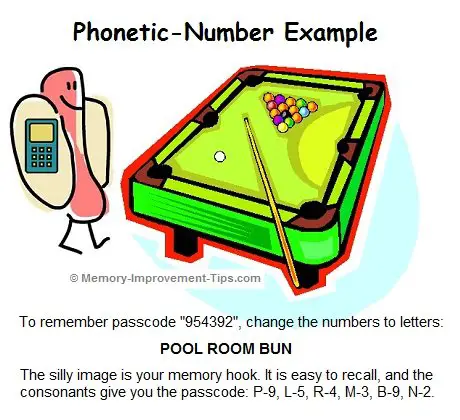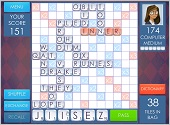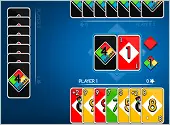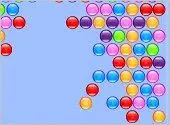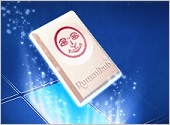- Home
- Better Memory
- Memory Systems
- Remembering Numbers
Remembering Numbers - Phonetic-Number Method
Remembering numbers is hard. But if you want to build a great memory, you need a way to memorize them.
Fortunately, there is a memory trick you can use for long numbers. It's called the Phonetic Number system (or Major system).
It was developed over 300 years ago and is one of the most powerful of the memory systems that use imagination and association.
Why is remembering numbers important? Imagine your boss asks you to give a sales presentation to the president of your company.
If the presentation includes sales figures and statistics, would you rather shuffle through papers or amaze everyone by spitting out the numbers from memory?
That's just one example, but if you need to remember passwords, phone extensions, mathematical constants, street addresses, product codes, Bible verses, or anything else numeric, then invest some time learning the Phonetic Number system.
Note: For a simpler way to remember long numbers temporarily, check out the Direct Chunking method.
Phonetic Number System
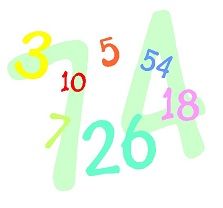
The Phonetic Number system is a substitute alphabet for changing numbers to letters. The reason this helps in remembering numbers is due to the effectiveness of "chunking" and memory.
For example, if I asked you to memorize the phrase, "Four score and seven years ago", you could easily do it. You could repeat it back perfectly every time - even though that phrase consists of 30 letters and spaces in a very specific order.
Now try memorizing the 30-digit number "8567 13543 887 54365 23678 369". Pretty impossible, right? But both the phrase and the number contain 30 characters, so what's the difference?
The reason one is simple to memorize and the other is impossible results from the chunking effect of the alphabet when letters are used to form words. Letters are clumped into words, and words are clumped into meaningful phrases.
So an incredibly powerful trick for remembering numbers would be finding a way to convert the numbers to letters. Then you could take the random 30-digit number and turn it into a series of words or phrases. This is exactly how the Phonetic Number system works.
Number to Letter Conversion
Here is the conversion table. To be able to use the Phonetic Number system for remembering numbers, you must first memorize this table (sorry). It's actually not as hard as it looks.
1 = is the "t" or "d" sound
2 = is the "n" sound
3 = is the "m" sound
4 = is the "r" sound
5 = is the "l" sound
6 = is the "j", "ch", or "sh" sound
7 = is the "k" or hard "g" sound
8 = is the "f" or "v" sound
9 = is the "p" or "b" sound
0 = is the "z" or "s" sound
The following mnemonic hints make it a lot easier to remember the table. One overall pattern is that when more than one letter is associated with a number, the letters sound similar (for example, "p" and "b" for "9")
1 - a typewritten "t" or "d" has just 1 downstroke
2 - a typewritten "n" has 2 downstrokes
3 - a typewritten "m" has 3 downstrokes
4 - the number 4 ends in the letter "r"
5 - hold out your left hand palm-outward and thumb out at a 90 degree angle - the five fingers form an "L" shape
6 - a "J" looks like a backward 6
7 - a "K" can be made from two back-to-back 7's
8 - a lower-case, written f looks like an 8
9 - looks like a backward "p" or an upside-down "b"
0 - the word "zero" begins with the letter "z"
You should be able to memorize this list with about 10 minutes of practice.
One more point. Notice that all of the letter equivalents are consonants. Vowels are not assigned to a number in this method. Nor are the consonants "w", "h", or "y" (w-h-y).
This is a good thing, because it means you can use the vowels and the three unused consonants in your word equivalents however you like.
How to Use the Method
I'll illustrate the use of the Phonetic Number system for remembering numbers with a couple simple examples. After studying these examples to see how it's done, be brave and try it out on something you need to remember!
Example 1 - Memorizing a 6-Digit Passcode. Let's say you work at a company where every employee is assigned a unique passcode that must be punched on a keypad when entering and exiting the company headquarters. They change the code periodically too, just to keep things interesting, and they don't want you to write the number down (for security reasons).
Here is your new code: 954392. Remembering numbers as long as this one can be difficult, but hold on: using the Phonetic Number memory system, this number could be translated to one or more words using these number-to-letter conversions:
9 = p, b | 5 = l | 4 = r | 3 = m | 9 = p, b | 2 = n |
So if you've memorized the conversion table above, you should be able to think of a catchy little phrase. Maybe "POOL ROOM BUN", or "BOIL RUM PAN", or any of several other possiblities.
Then you would take your silly phrase and quickly think of a visual association to remember it by. For instance, "POOL ROOM BUN" might make you think of a giant hotdog in a big bun playing billiards in a pool hall.
(For more information about using association and substitute words, see the Using Association page.)
You could associate the actual keypad by the door at work with a hotdog bun as well. Then, each time you were about to push the buttons on the keypad to get in the building, you would automatically think "hotdog bun".
Perhaps the keys on the keypad are little hotdog buns. This thought would remind you of the hotdog with the big bun playing pool (POOL ROOM BUN = 954392).
Example 2 - The Sales Presentation. Now let's suppose you are a salesperson for Widgets, Inc. Your supervisor has asked you to present the latest quarterly sales figures to your company president.
You want to make sure and lock those dollar amounts in your head so you don't mess up the presentation.
Here are the sales numbers: Widget A - $53,000; Widget B - $82,000; and Widget C - $19,000.
Now, if you just relied on rote memorization, you might not only forget the actual sales figures, but you could get confused about which figure goes with which widget.
So let's combine the Alphabet Peg memory system (sound-alike version) with the Phonetic Number system to make sure that doesn't happen.
In the sound-alike Alphabet Peg system, the equivalents for A, B, and C are as follows:
- A - Hay
- B - Bee
- C - See
That's easy enough. Now for the numbers. Since all three amounts were rounded to the nearest thousand, we can forget about all the zeroes, since you will automatically remember that part of the number (you will). That leaves you with memorizing the numbers 53, 82, and 19.
Using the Phonetic Number conversion chart, we have:
- 53 = l, m
- 82 = f/v, n
- 19 = t, p/b
So one possible conversion might be:
- 53 = lame
- 82 = fan
- 19 = tape
Putting everything together, we have:
- hay lame
- bee fan
- see tape
So here's what you could visualize:
A big yellow hay stack with arms, legs, and a face (i.e., personified), walking down the road with a cane and limping (i.e., a lame haystack). This gives you $53,000 (53 = l,m) as the sales figure for Widget A (A=hay).
This may seem silly, but think about it for second - as long as you remember your image of a lame haystack, there is no way you can forget the sales figure for Widget A or confuse the amount with another widget's sales figures!
A swarm of bees flying into a fan. (I'll let you visualize that one on your own.) That gives $82,000 (82 = f,n) as the sales figure for Widget B (B=bee).
A long piece of silver duct tape being wrapped around your eyes (ouch!). That gives $19,000 (19=t,p) as the sales figure for Widget C (C=see).
It should be clear at this point that the Phonetic Number system really works, and not only that it is kind of fun. Your next steps should be to review the Number to Letter conversion chart above. Then put it into practice at work, at school, and in your everyday life with the long numbers you need to remember!
Published: 04/01/2008
Last Updated: 06/11/2020
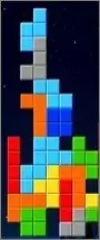
Newest / Popular
Multiplayer
Board Games
Card & Tile
Concentration
Math / Memory
Puzzles A-M
Puzzles N-Z
Time Mgmt
Word Games
- Retro Flash -
Also:
Bubble Pop
• Solitaire
• Tetris
Checkers
• Mahjong Tiles
•Typing
No sign-up or log-in needed. Just go to a game page and start playing! ![]()
Free Printable Puzzles:
Sudoku • Crosswords • Word Search

Hippocampus? Encoding? Spaced repetition?
Look up memory or brain terms in the A-Z glossary of definitions.

